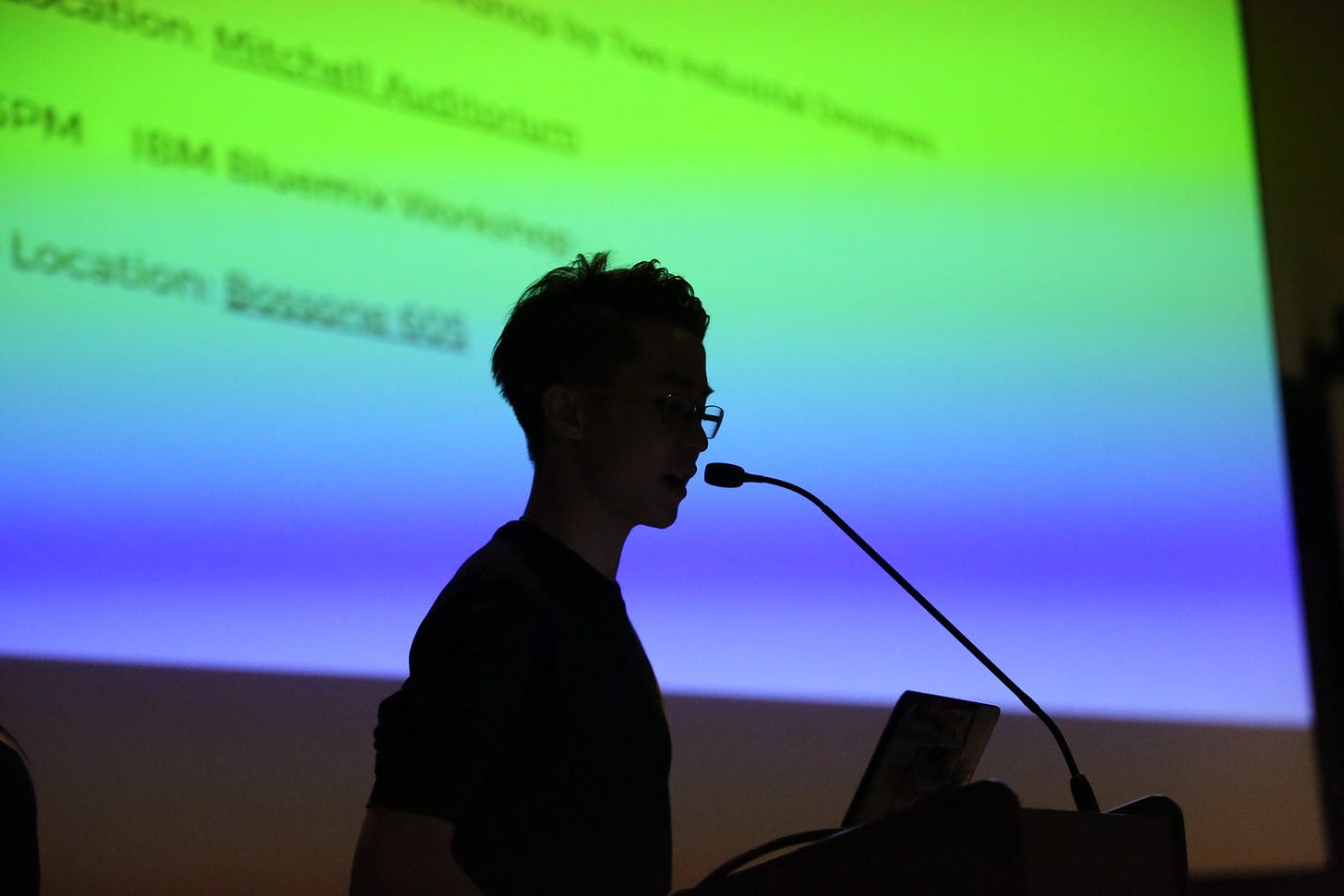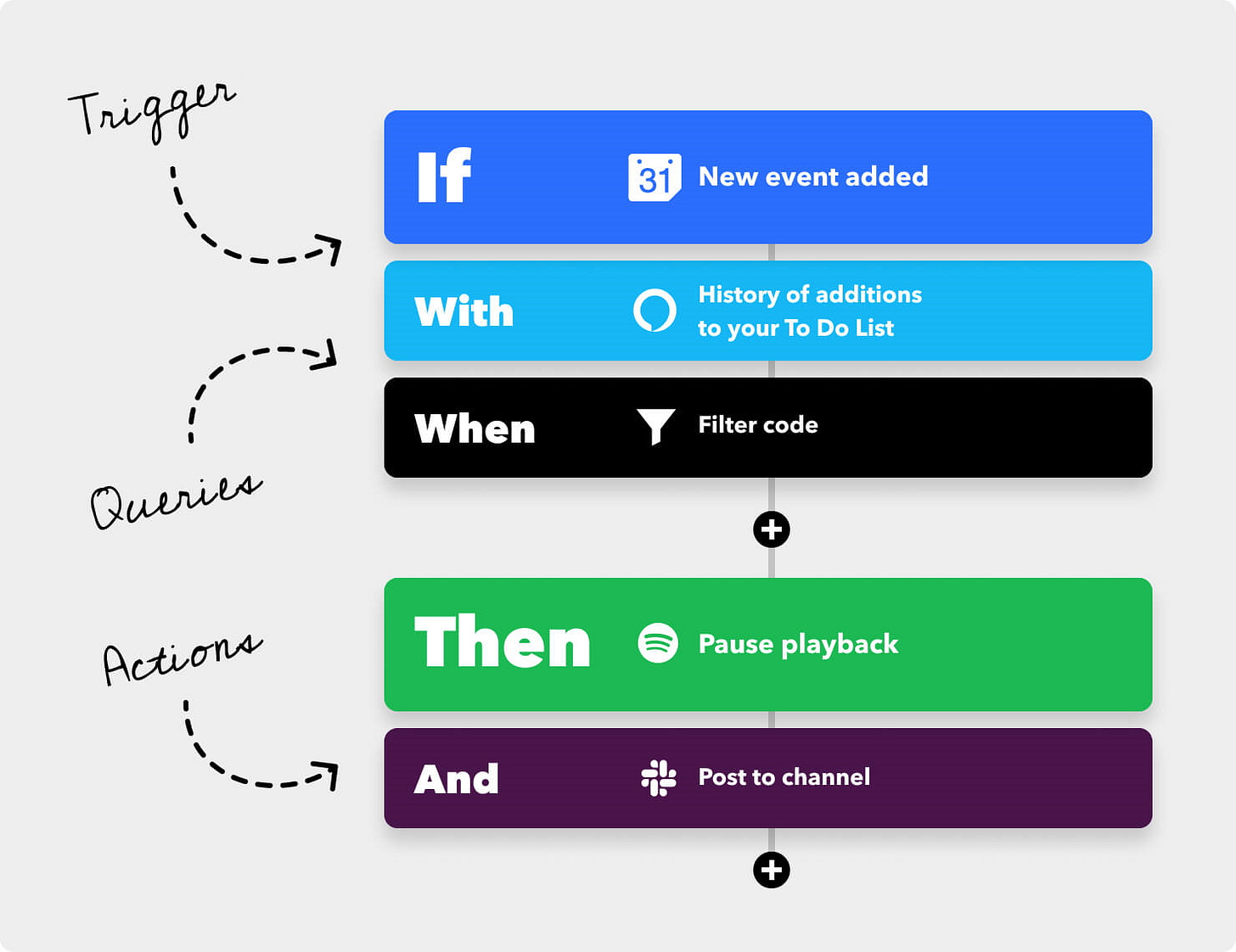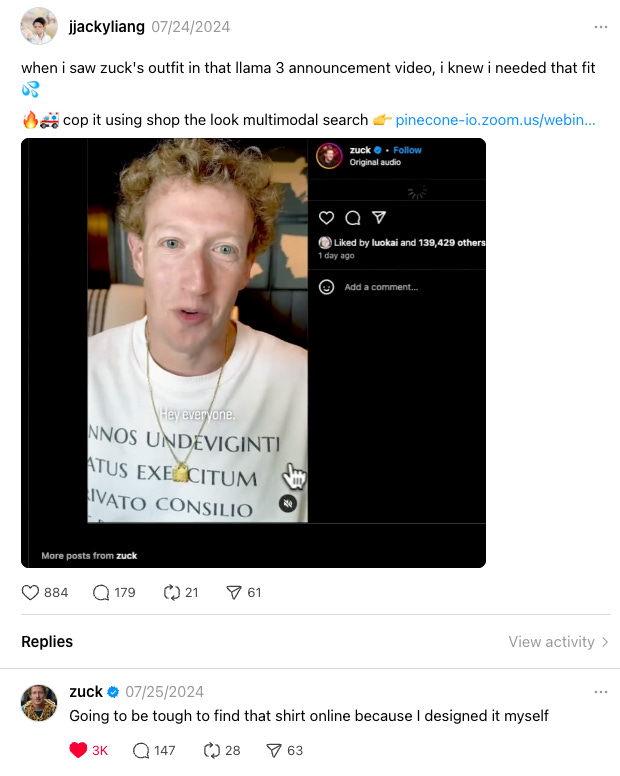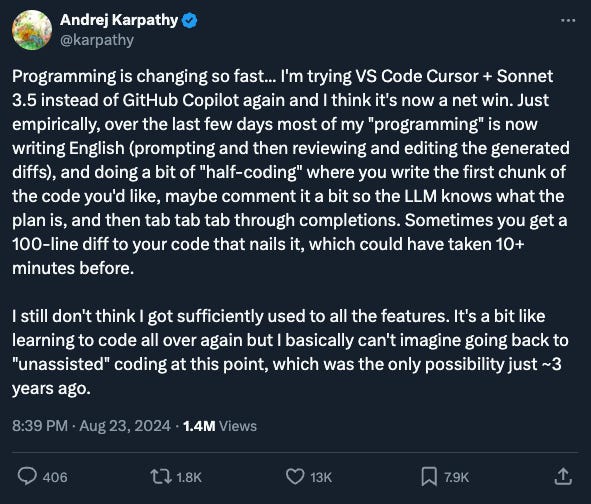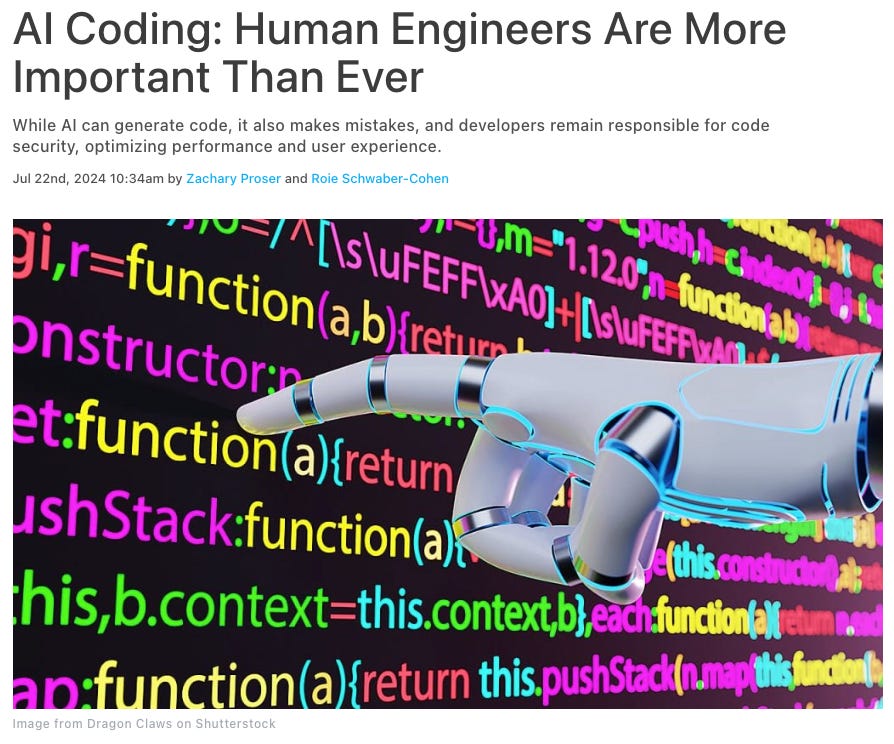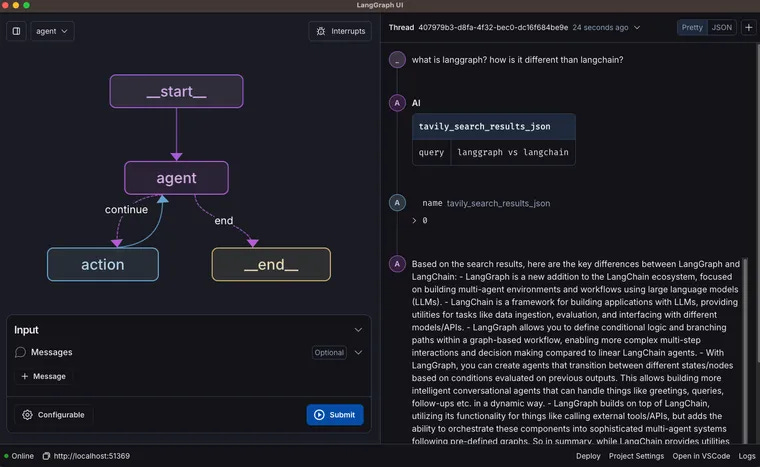LLMs Are The New No-Code Platform
LLMs will fundamentally change the way coders and non-coders create apps, and we are not going back.
As a former developer at Looker (2016-2018), turned product manager at Singlestore (2018-2020), and now a developer advocate at Pinecone, I've watched the space of no-code platforms with deep interest — I personally use such no-code platforms such as Squarespace, IFTTT, and Zapier.
These platforms promised to democratize app creation! Everyone can build an app! Everyone can build a website! But once you start using them, you realize they occupy an awkward middle ground — not specialized enough for niche needs, yet not customizable enough for complex projects.
But recently, the realization is slowly yet confidently dawning at me the new kind of no-code platform: large language models like Anthropic Claude and OpenAI’s ChatGPT.
Traditional no-code platforms are very limited
Companies like Zapier and IFTTT, which have pioneered traditional no-code platforms, face significant challenges in maintaining and expanding their services. As the number of supported integrations grows, so does the complexity of keeping everything running smoothly. For each service, these companies must keep up with new versions and features, maintain compatibility with older versions, and ensure proper interaction with other services. This creates a resource-intensive cycle of updates and maintenance that scales dramatically as the platform expands.
While not strictly an O(n^2) problem, the interdependencies between services can create a multiplicative effect, where a change in one API might require updates and testing across multiple integrations. This constant juggling act requires near-exponential human engineering resources and can limit how quickly these platforms can adapt to new technologies or emerging platforms.
On rediscovering coding again
Since moving out of professional software development when I left Looker in 2018, I hadn't written a line of serious code in nearly six years; yes, this is a long time in the development world! When I took the developer advocate role at Pinecone earlier this year, I realized I had a new coworker — I have LLMs like Claude Sonnet 3.5 and GPT-4o as my pair programmer.
And let me tell you — the experience has been nothing short of revolutionary for me.
Having Claude Sonnet 3.5 and GPT-4o as my pair programmer has been nothing short of revolutionary for me.
With the help of an LLM, I've been able to:
rapidly prototype ideas
learn new programming languages and best practices
refresh my memory on programming languages I’ve used before
write front-end code — I am not traditionally a front-end dev
debug complex issues — shout out to Claude Sonnet 3.5 for being especially incredible in fixing React bugs
write documentation, especially for installation and setup
create scripts for cleaning, ingest, and scraping
and many many more

The power of LLMs as my peer programmer became extremely apparent when I built an app called "Shop to Look" for Pinecone (which indirectly got shouted out by Mark Zuckerberg). This project used Python FastAPI + Next.js to integrate Google's Vertex AI, Pinecone's vector database, and Vercel for hosting, to create a next-gen multimodal e-commerce search experience. Creating this fully-featured production-ready web app in under two months as a very rusty developer would have been impossible without the help of LLMs, but also a monumental, if not impossible, task with traditional no-code tools.
I can’t think of a single no-code platform that can handle all of these pieces.
Why LLMs excel as the new no-code platform
To me, LLMs bring two critical advantages to the table.
First, they can access and understand the latest API documentation, eliminating the need for fully manual integration and API updates. Cursor, my colleagues and I’s IDE of choice, has generally up-to-date documentation and code on the majority of popular libraries.
Second, unlike traditional no-code platforms, LLMs can write, modify, and debug actual code. This offers significantly more flexibility in connecting services and handling edge cases. While not all code it writes has 100% successful execution rate, debugging this is as simple as throwing the exceptions or errors back to the LLM for it to fix it. Claude Sonnet 3.5, for example, is exceptionally good at this.
Update 08/27/2024: All employees within Anthropic use Anthropic Claude to help them code (even non-engineers), leading to everyone being able to build product better and faster — How Anthropic Built Artifacts by Gergely Orosz
The software engineer’s role is evolving, and we’re not going back
My colleagues at Pinecone, Zack and Roie, recently shared wrote an article called “AI Coding: Human Engineers Are More Important Than Ever”. They argue that while AI can generate code at unprecedented speeds (and possibly even better quality), it actually makes human engineers more important than ever. They describe a new workflow where developers focus on high-level design and problem-solving, using AI to handle implementation details.
This shift allows experienced developers to tackle more ambitious projects, experiment with new approaches, do more with less time, and handle work that most devs generally don’t love doing like writing unit tests or scaffolding.
However, AI can make mistakes (just like humans!), and developers still need to be responsible for ensuring code security, optimizing performance, and crafting exceptional user experiences. The most successful engineers in the coming years will likely be those who can effectively guide and leverage AI tools, combining human intuition + creativity with machine-like efficiency. The most successful engineers in the future will be part human, part machine.
The most successful engineers in the future will be part human, part machine.
What does the future of no-code platforms look like?
While LLMs offer exciting possibilities, I think traditional no-code platforms still have a place in the future of software development. As a matter of fact, assuming companies like Zapier and Squarespace are smart, LLMs won’t replace them, but could exponentially augment how they operate, add new extensions, and maintain old ones.
I’m imagining a no-code platform that uses LLMs to monitor the SDK or API documentation of various services. When changes occur, the LLM could potentially generate updated code, test it for functionality, and implement it in real-time. Human engineers would still oversee the process, ensuring the code is robust and secure, but the day-to-day task of updating APIs could be largely automated. With the dawn of Claude’s Artifacts and v0.dev, the user interface of the no-code platform could also be automatically generated. This opens up the possibility of a truly dynamic no-code platform that evolves to fit the user's level of coding experience and needs.
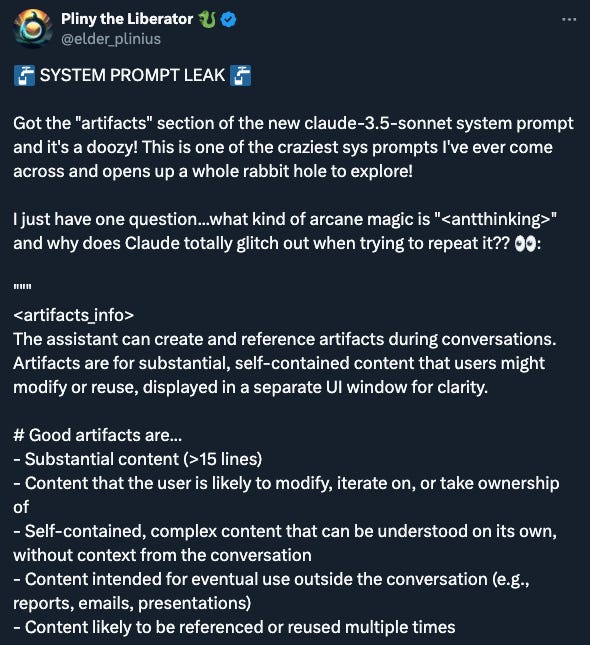
Imagine a platform (maybe I should build this 🤔) that starts simple for non-coders, offering basic drag-and-drop functionality akin to Zapier and IFTTT. As the user grows more comfortable and their projects become more complex, the platform could seamlessly introduce more advanced features, even allowing direct code editing or natural language coding for those who want it.
This approach could allow no-code platforms to offer a wider array of integrations, kept more current with less manual intervention, while offering a truly custom-tailored no-code experience that works across all levels of coding experience. A solution like this completely negates three primary problems of current no-code platforms:
The limitation of predefined APIs and SDKs
The inability to cater to users with different levels of coding expertise
The exponential need for engineering resources to maintain existing integrations while developing new ones
Update 08/24/2024: Just as I published this article, LangChain released their LangGraph Studio, the first IDE for building agentic applications. This is a very good example of building user-friendly UI/UX on top of LLMs for even greater accessibility and effectiveness for AI builders.
Looking forward
LLMs aren't a perfect solution — they still require coding knowledge and smart prompting! But, I believe they represent an exciting new direction for software development in general, not just no-code platforms. Not only are models constantly improving, but the interfaces and ways we interact with them are also improving. As mentioned earlier, Claude’s Artifacts and v0.dev are extremely user-friendly and innovative ways to work with LLMs that goes beyond just being a text-based “chatbot”. Model improvements is one thing, but UI/UX innovation will make AI more accessible and effective for an even wider range of users, not just the technically-oriented.
Traditional no-code companies also have an opportunity to innovate in this space. As a matter of fact, assuming companies like Zapier, IFTTT, Squarespace, etc, are forward-looking, LLMs won't replace them, but could exponentially augment how they operate, add new extensions, and maintain old ones. New players building neo no-code platforms can also outpace established players who may be hesitant to innovate due to fears of cannibalizing their existing business models.
All I can say is, I feel energized and invigorated on rediscovering the joy of building software again. I love building things. I love solving problems. I feel a sense of wonder at how far we've come in this (relatively) short industry's path — we went from hole punching to writing machine code, from compilers and interpreters to IDEs, from syntax highlighting to smart suggestions like Visual Studio's IntelliSense, and now to LLM-augmented coding. What will the next 5-10 years look like?
All I know is — the future of coding is part human, part machine.
We aren’t going back.


